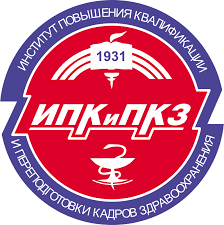Pathological diagnostics
Biopsy
Biopsy is a diagnostic procedure consisting in taking tiny particles of tissue (tissue sampling) from a suspicious site such as tumor, polyp, lingering ulcer. The choice of instruments depends on the tissue sampling site. It may be a bore biopsy needle, endoscope (for esophageal or gastric examination), lightguide (for bronchoscopy), an ordinary scalpel (in the course of surgery).
The main purpose of biopsy
The main purpose of biopsy is to determine whether it is a benign or malignant disease we are to face. This procedure is resorted to in monitoring of cancer treatment.
Precise biopsy taking is an art requiring the doctor’s experience and skill. The result of the analysis and, accordingly, the choice of treatment policy depend on his/her exact selection (on its onset, the malignant lesion may be quite tiny).
Histological study
Bits of tissue obtained with biopsy are sent to a special laboratory where their histological study is made. It is based on the fact that all the body cells have a distinctive structure depending on what kind of tissue they belong to. With malignant degeneration, the pattern cardinally changes: the inner structure of the cell is damaged, and it ceases to be similar to the neighbouring ones. These impairments are as a rule so significant that can be seen on an ordinary microscope.
Biopsy sample processing
Prior to a biopsy sample being scrutinized, it needs to be processed in a special way: to be cut into very thin transparent slices (sections) and to be stained. To prepare the sections, the tissue bit is first made solid (impregnated with paraffin), then fixed in a special clamp and cut with a specific supersharp knife ¬ microtome.
The obtained superthin pannicula are placed on small oblong glasses and stained just on them. The ways of staining are rather numerous but they have something in common: they are carried out in several steps.
Previously, samples were moved from one tray to another manually, now special devices are able to carry out all staining steps. But this is perhaps the only stage allowing automation. The rest of them wholly depend on specialists’ skill and consideration.
Interpretation of the findings
When the stained specimen is placed under the microscope ocular, it is the pathologist’s turn to join. Pathologist is a physician of a very important medical specialization. Having assessed the distinctions of the cells studied, he/she renders the verdict: benign or malignant tissue was taken for biopsy.
Moreover, depending on the kind of cancer “breakage” of cells, it is not infrequently possible also to determine the type, distinctive features and even the prognosis of the disease.
Histological study
Cytological study
What is it cytology smears?
Cytology, as well as histology, is a method of pathological verification of the diagnosis. The study sample may be obtained from any body site by means of a smear or scarification (scaling) from the surface of the neoplasm (skin or mucosa), puncture of a subcutaneous or intracutaneous neoplasm, in an endoscopic examination (bronchoscopy, gastroscopy, colonoscopy), from biological or abnormal body fluids (for example, urine, sputum, breast nipple discharge, cysts and body cavities effusions). The obtained material is evenly spread over the microscopic slide or put in a closing container or vial and sent to the cytological laboratory.
The advantages of cytology
- Painlessness owing to insignificant traumatization (discomfort with scarification, pain similar to that at intramuscular injection with puncture).
- Safety of obtaining samples (including the sites where biopsy is difficult to perform or impracticable, entailing complications).
- Rapidity of making the diagnosis: about 30 min from taking the samples to microscopy!
- The opportunity to diagnose cancer at the initial (preclinical) stage, with the results being comparable or similar in efficacy to those of histology.
- Relative simplicity and availability: inexpensive equipment and reagents of the cytological study, relative simplicity and reproducibility of the technique.
- Small amount of the material needed for establishing the pathological diagnosis.
When is cytology employed?
Cytology is applied:
- in preventive and diagnostic examinations at the outpatient stage (in outpatient clinic);
- in the course of case follow-up: multiple examinations in the process of atypical changes, in the process before and after treatment; for assessment of therapeutic pathomorphism (loss) of tumor;
- simultaneously with histology;
- in situations of patient’s grave condition not allowing to perform a more traumatic histological study.
Cytology steps
Sampling is made by the doctor on duty: gynecologist or obstetrician, oncologist, subspeciality doctor or general surgeon. Then the samples are sent to the cytological laboratory where laboratory doctor’s assistants make microspecimens, and cytologist doctors study them microscopically.
In most of the cases, registration and manufacture of microspecimens take no more than 30 min. The duration of time for microscopic study and diagnosis making depends on the complicacy of the microscopic pattern and information capacity of the samples obtained. In most of the studies, the cytology report is made out on the reception day, but in complicated diagnostic cases requiring additional analysis techniques (immunocytochemistry, flow cytofluorometry), the result may be expected up to 10-14 days.
What are the benefits of the cytology report?
Cytology is a method of pathological verification of diagnosis, advisable for a number of nononcological diseases and obligatory for cancer patients.
Cytology confirms the presence of inflammation, defines its activity and extent of intensity, and in many cases it points out the infection agent causing the inflammation, facilitating administration of appropriate treatment.
Cytology is not always able to exactly determine the nature of non-tumor disease according to international classifications; it is more important, however, that cytology clearly demonstrates the onset of malignant transformation of cells, allowing to duly refer the patient to an oncologist doctor.
The cytology specimens always clearly demonstrate the malignant nature of a neoplasm. The level of cytologist doctors’ current expertise makes it possible to establish the diagnosis in accordance to international histology classifications of malignant tumors in the cases of both most common diseases (lung, gastric, intestinal, uterine, breast cancers) and more rarely occurring ones (melanoma, lymphomas, hepatic, renal, pancreatic cancers, etc.) The findings of the cytological study determine the scope of examinations needed, the plans of types and extent of treatment, allow to make a preliminary prognosis of the disease outcome.












